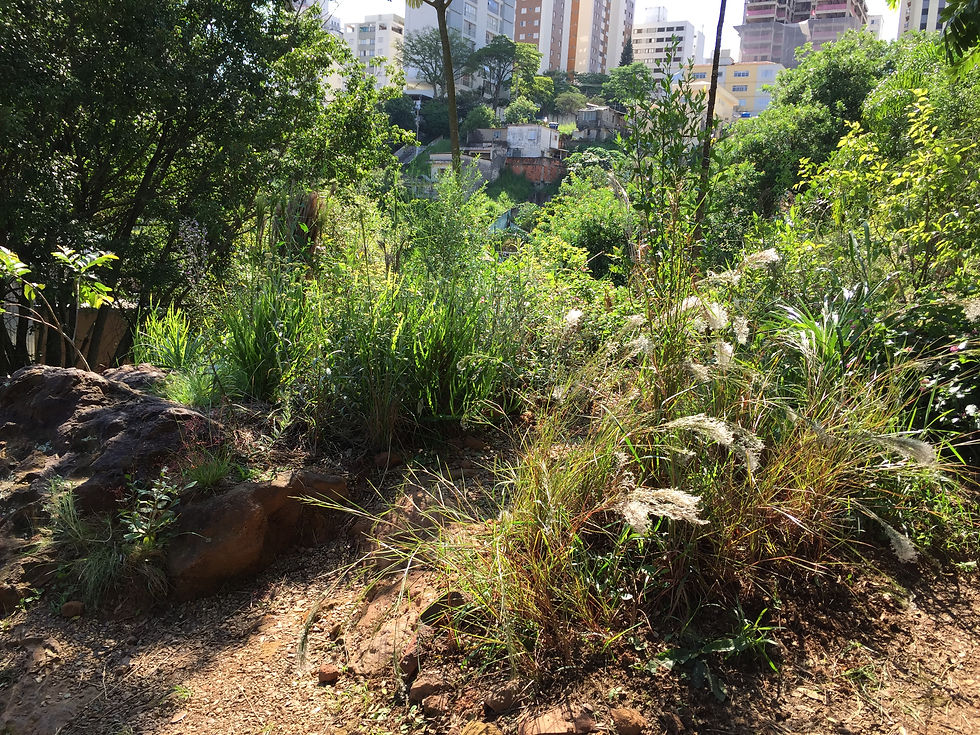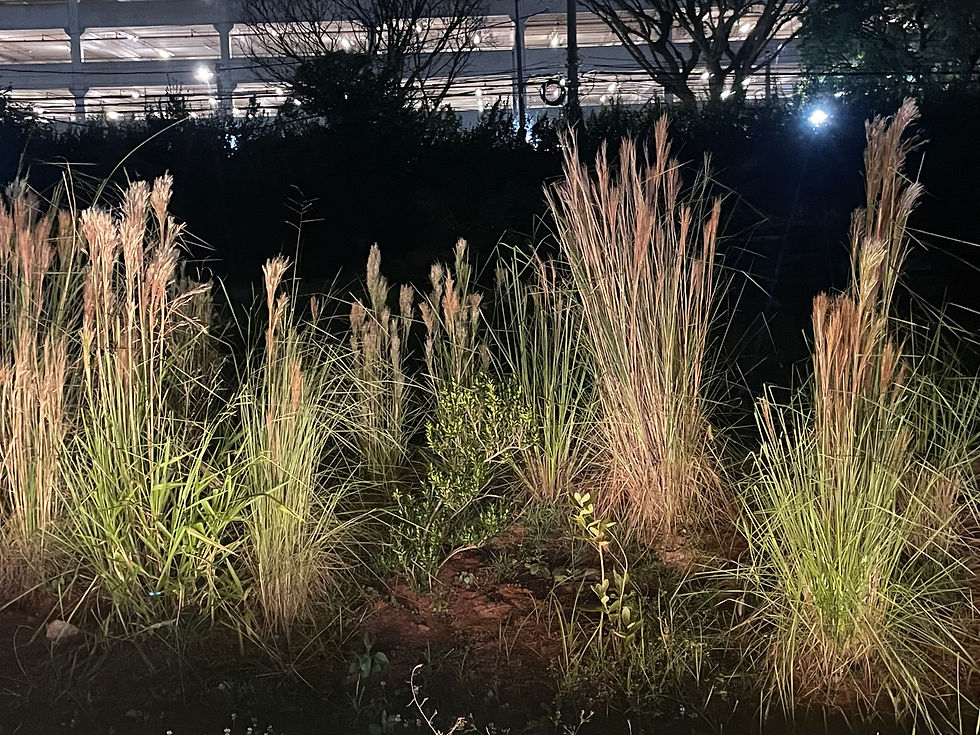
29 - CIPÓ DE SÃO JOÃO Pyrostegia venusta (Ker Gawl.) Miers (Bignoniaceae)Pyrostegia venusta (Ker Gawl.) Miers (Bignoniaceae)

29 - Cipó-de-são-joão - Pyrostegia venusta (Ker Gawl.) Miers (Bignoniaceae)
Climbing plant up to 10m, very branched. Compound leaves, of opposite disposition, without stipules, with rounded, pointed leaflets, rounded base and smooth margin, about 4 cm long and 2 cm wide. Flowers in groups, orange, showy, bisexual, with fused petals and forming a long tube. A pendant-like fruit that opens winged seeds when opened.
In the middle of the year during the festivities of São João it is a recurring sight on the side of roads that leave São Paulo, taking the top of some trees in orange red or running down banks on the shoulder.
Distribution: It occurs throughout Brazil, preferably in a cerrado environment.
Situation in São Paulo : Sometimes used in landscaping, it spontaneously vegetates on some land indicating traces of savannah, and behaves as an invader.
How to plant: It can be found in garden houses and is an unnecessary task to collect, except in areas that are undergoing some destruction process. Anyway, it reproduces by cutting, planting the branch in the soil and watering well. The seeds, produced in abundance in the spring, germinate relatively easily, and can be harvested from the hanging pods. It should be planted in full sun.
Uses: Ornamental plant par excellence, with exuberant flowering in the autumn months until spring, being used to cover pergolas and fences, due to its rusticity and speed of growth. Its flowers are frequently visited by hummingbirds and its main pollinators.
BATALHA, MA; ARAGAKI, S .; MANTOVANI, W .. KEY TO THE IDENTIFICATION OF VASCULAR SPECIES OF THE CERRADO IN EMAS (PIRASSUNUNGA, SP) BASED ON VEGETATIVE CHARACTERS. BOTANICAL BULLETIN FROM THE UNIVERSITY OF SÃO PAULO, P. 85-108, 1998.
VELOSO, CLARICE DE CARVALHO. PHARMACOLOGICAL EVALUATION OF THE HYDROALCOHOLIC EXTRACT OF FLOWERS OF PYROSTEGIA VENUSTA (KER.) MIERS. 2010. 63 F. DISSERTATION (GRADUATE PROGRAM IN PHARMACEUTICAL SCIENCES) - FEDERAL UNIVERSITY OF ALFENAS, ALFENAS, MG, 2010.

Capins-rabo-de-burro, no Cerrado Infinito da Nascente.

Primeiros capins rabos de burro plantados por seres humanos em São Paulo!!! Culturalmente este capim é uma praga e sempre foi eliminado. Todos pensam assim, jardineiros, paisagistas, hortelãos, pecuaristas, etc. Não deixa de ser irônico conseguir convencer pessoas a pegar na enxada para plantá-los. Tem coisas que entendemos melhor usando as mãos, a atividade manual é uma extensão mental, importante de várias formas. Muita gente tem constrangimento em usar uma enxada, como se fosse uma questão

Foi uma das primeiras espécies que introduzimos, logo no começo do projeto. Depois de algumas semanas, já adaptadas, alguém botou fogo nos capins, uma recado de que não seria fácil mudar a cultura sobre eles.

Com as chuvas os capins se recuperaram rápido, logo produziram sementes e começaram a nascer por todo lado.

No começo os jardineiros da prefeitura eram uma ameaça, já existia um histórico de conflitos com outras iniciativas de plantar na praça. Eles cortavam tudo entre 5 cm e a copa das árvores, mas logo entenderam do que se tratava. Muitos tinham vindo de áreas rurais, da Bahia, do Nordeste e conheciam as plantas. Talvez a saudade da paisagem de origem tenha ajudado eles a entenderem a proposta, Passaram a preservar as plantas do Cerrado Infinito.

O capim rabo-de-burro é uma espécie que gosta de água, e recorrente na beira de lagoas, e várzea dos rios.

Coletando sementes de capim Rabo de Burro, não tem segredo, terrinha, sol, e uma boa irrigação, e BUM! Você terá centenas de mudas!